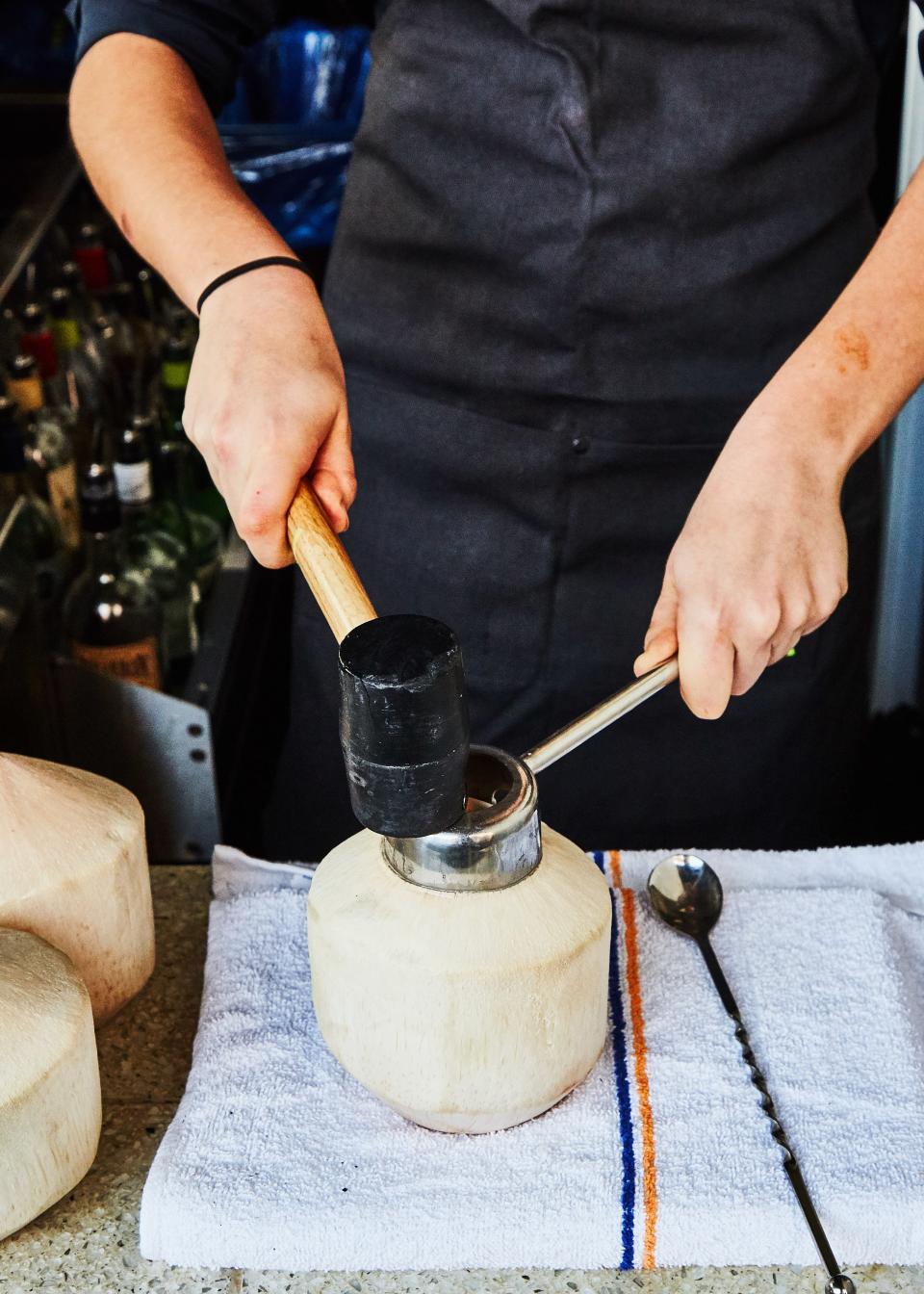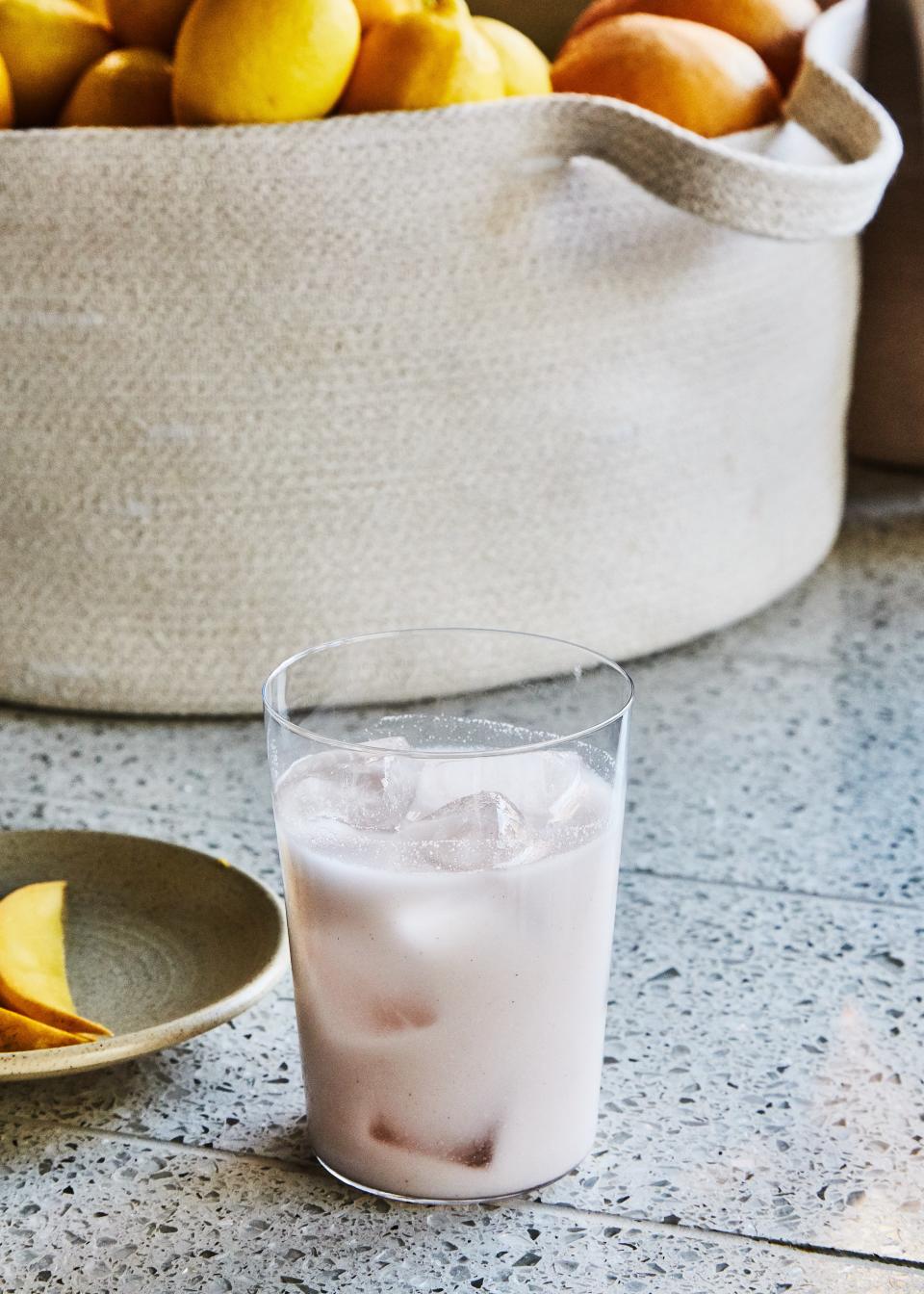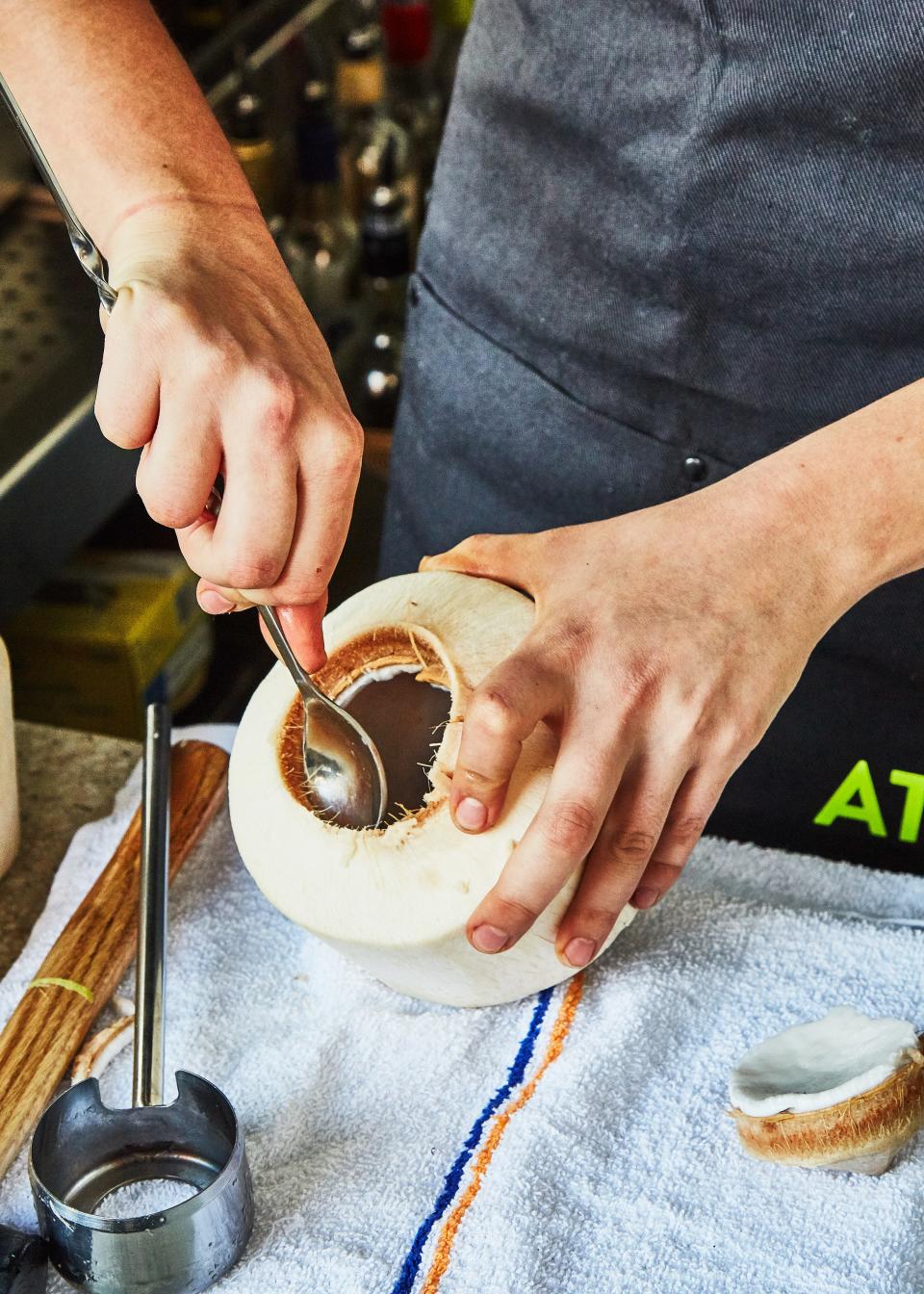This One-Ingredient Smoothie Is the Drink of the Summer
By Jamie Feldmar. Photos by: Alex Lau.
I have never been a coconut water person. I think it tastes like laundry detergent, and no amount of hype about the fruit’s supposed hangover-busting benefits has been enough to sway me toward the bottled versions. So I wasn’t exactly chomping at the bit to try the coconut licuado on the menu at Atla, the sleek, new, all-day modern Mexican restaurant in NYC from the team behind Cosme. But that was before I met Yana.
Yana Volfson is the Bronx-born beverage director at Atla and Cosme, and a woman who understands that not all coconut drinks are created equally. Although there’s plenty of tequila and mezcal on Volfson’s cocktail menu, her nonalcoholic offerings go deep, too—think multiple agua frescas; café con leches with housemade coconut and cashew milks; a pre-Columbian hot chocolate-and-masa drink called atole. And then there’s her coconut licuado.
“Licuado,” which translates to “blendeds” or “liquefieds” in Spanish, refers to the smoothie-esque fruit drinks common across Latin America. For Atla’s version, Volfson wanted to showcase the coconut in it purest, most honest form. There’s no sugar, salt, milk, water, or anything else in Volfson’s licuado; her “recipe” consists of just one ingredient: a fresh coconut—both the meat and the water—blended together into a thick, viscous juice.
“To me, the definition of a licuado is the experience of a whole fruit, as opposed to just its juice” says Volfson. “So I thought about what fruit I wanted to express, and coconut was the most ideal choice.” As Volfson puts it, this preparation allows diners to experience the “complete coconut,” which, I can confirm, tastes about a million times better (richer, fuller, more complex) than the prepackaged stuff.
Another reason Volfson chose coconut for Atla’s licuado was to introduce New Yorkers to the idea of more texture in their drinks. “People in the U.S. tend to shy away from viscosity and slime, and, in order to celebrate Latin American beverages, we wanted to wean people into the idea of texture by using an ingredient that’s familiar, but prepared differently. We’re taking it to another level, but the irony is that that other level is so simple,” she says.
To make the licuado, Volfson whacks a mallet against a stainless steel “jack” designed specifically to break the surface of a young coconut and pry a small circle off the top. She pours out the water and sets it aside, then uses a swizzle spoon to scrape out the pulp, or meat, which will get blitzed with the coconut water in a blender until smooth. (The younger a young coconut, the more pink its meat will be; but there is no way to tell until you crack into the fruit.) “We wanted to start simply, by creating the best coconut milk possible, before we start adding flavors like vanilla or sea salt,” says Volfson, who plans to eventually expand the licuado selection to other fruits.
As for the claims that coconut water is a cure-all, Volfson is on board. “I definitely think it helps with hangovers. This drink is meant to be refreshing—it’s been lovely to bring people back to life with it.” She says she’s heard that coconut water could be used as plasma if you were stranded in the jungle and needed a blood transfusion—a claim I hope I never need to verify. “The electrolytes in coconuts are real, and a very energizing liquid,” Volfson says. “The nutrients you get off a whole coconut, and the fiber, and the wonderful fats— it’s really a magical fruit.”
This story originally appeared on Bon Appetit.
More from Bon Appetit:
When Life Gives You Lemons, Make These Lemon Desserts
32 Recipes to Make in Your Cast Iron Pan
40 Avocado Recipes, So You Can Eat as Much Avocado as Possible
58 Dishes to Bring to an Outdoor Party
No-Cook Pasta Sauces You Should Have Up Your Sleeve at All Times



